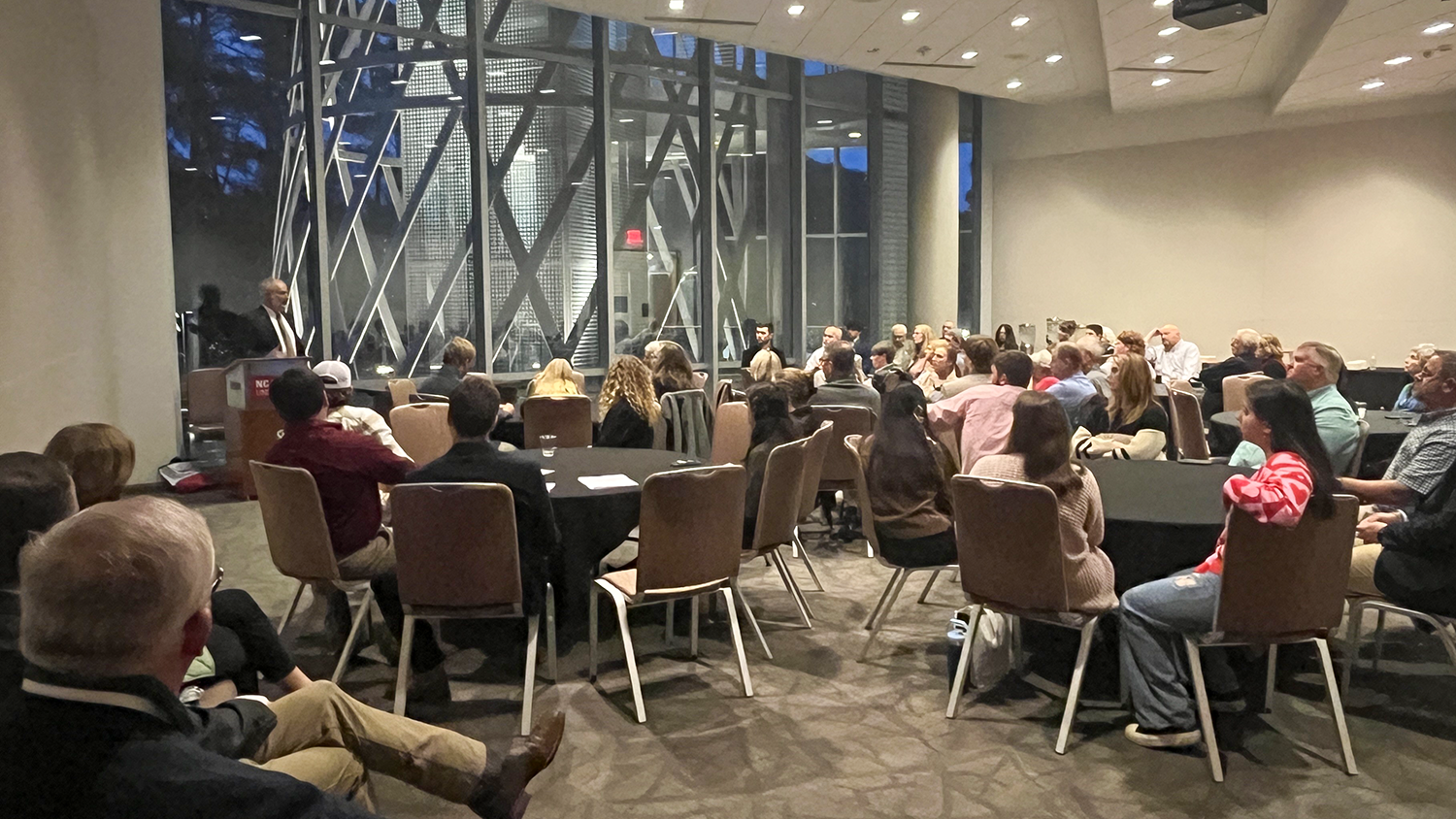Extension Conference Resources Roundup

The Department of Agricultural and Resource Economics led or participated in thirteen sessions during the 2021 Extension Conference. You can find the PowerPoint resources below.
Field Crops Market Outlook and Agricultural Policy Updates
Blake Brown provided an outlook on Tobacco and Peanuts. Brown noted that demand for peanuts rose during COVID-19 and peanut exports, particularly to China, grew in 2020. While tobacco was at its lowest level of production in the state in 2020, the market looks slightly more favorable as China has resumed purchasing flue-cured tobacco. Potential disruptors include a proposal for a new excise tax on tobacco products and higher input costs, particularly if the minimum wage for H2A workers increases.
Nick Piggott presented a Grain Outlook which showed that demand outweighed supply in 2021 which indicates there may be increased acres planted with grain in 2022. This could lead to higher prices for grain, but with the fluctuation in costs of inputs like seed, fertilizer, chemicals and insecticides, the market is going to be dynamic next year.
Rod Rejesus provided program updates about ARC, PLC, and WFRP which now includes a micro farm insurance policy for small farms earning under $100,000 per year. Rejesus also shared some policy information about the new USDA Climate Initiatives which provides financial incentives directly to the grower for participating in activities like planting cover crops. Learn more about Commodity Programs, Crop Insurance, and Climate Initiatives.
Brittany Whitmire and Kelly Zering provided an Animal Agriculture Update. Download the Dairy Outlook
Whitmire discusses the rollercoaster prices of dairy in 2020 and warned of the potential disruptions from inflation and labor shortages. Zering shared statistics on the national inventory of hogs, beef and poultry and showed that exports are up.
Alejandro Gutierrez-Li gave an Agricultural Labor Outlook in which he discussed the current shortage of agricultural workers due to an increase in border enforcement, the aging of the farm labor force, economic growth in Mexico and higher wages in construction. Gutierrez-Li covered two immigration projects currently under discussion that could further affect the availability of workers on farms: the 2021 US Citizenship Bill and the 2021 Farm Worker Modernization Bill.
Nick Piggott and Hiedi Schweizer presented an Introduction to Basis and Movement of Corn in NC in which they demonstrated the use of the online tool “Historical North Carolina Corn, Soybean, and Wheat Price and Basis Data.” They also discussed the sources of non-local corn supply to augment feedstuffs needed for the NC livestock industry and its implications for NC markets.
Andrew Branan shared his presentation Present Use Value and Silvopasture. Topics included costs vs. timber value, property tax implications and sample leases. Branan also presented on Land Use Law and gave an Environmental and Land Use Update.
Brittany Whitmire led the session “Value-Added Opportunities for NC Dairy Farms & How to Help.” Download the PowerPoint.
Workshop on Carbon Markets
Rod Rejesus presented on the Economics of Soil Health. Topics included cover crops and no-till practices and USDA payments for voluntarily adopting such practices.
Eric Edwards discussed Carbon Markets and Agriculture in North Carolina which included exploring some companies that currently buy carbon.
Alejandro Gutierrez Li discussed labor challenges and how extreme weather like heat waves, hurricanes, floods or fires are causing more unsafe days for working outside. Poor working conditions may be mitigated by working abnormal shifts like overnight hours, requiring more rest time and providing more shade and water. As weather continues to get more extreme, attracting and retaining farmworkers could become more challenging.
- Categories:


